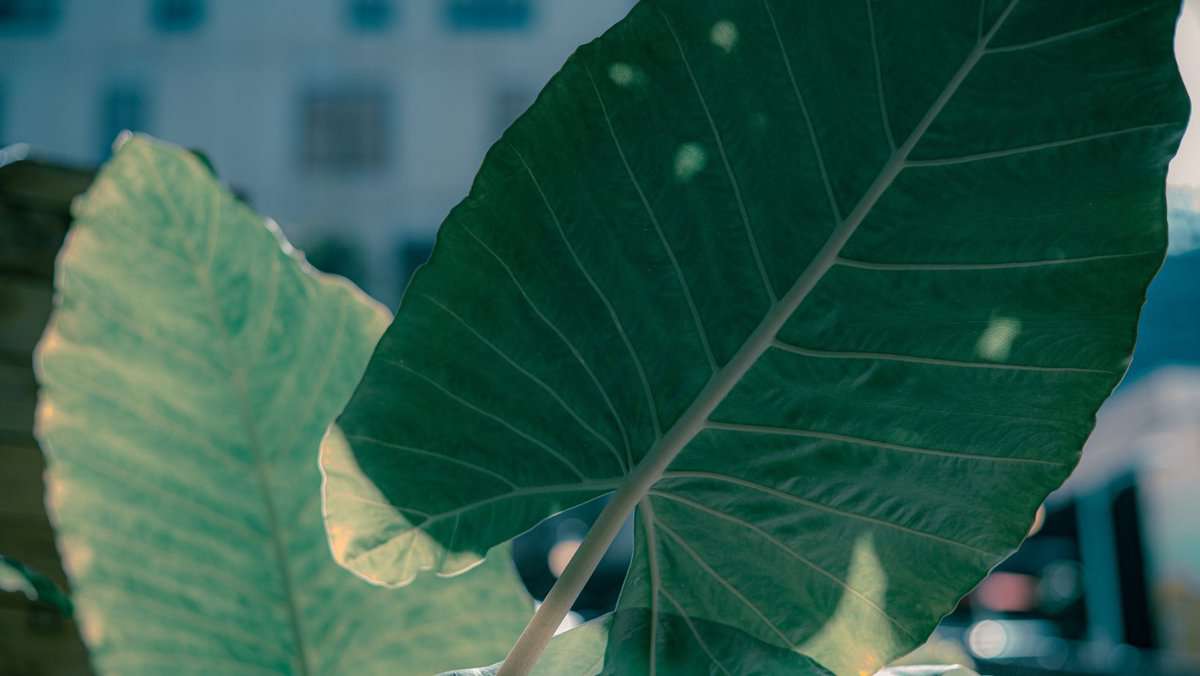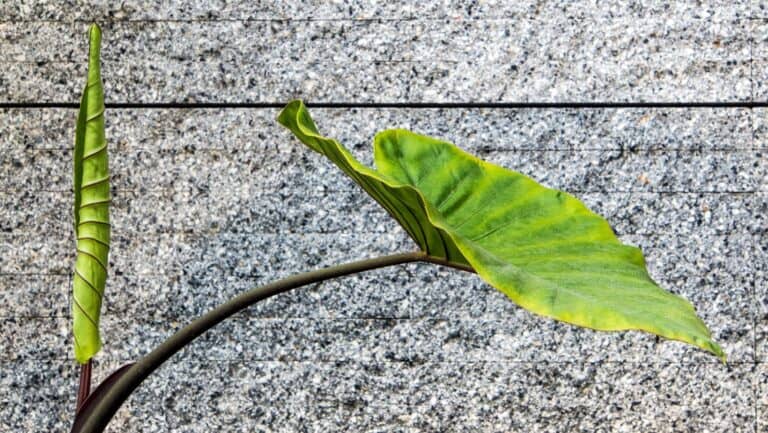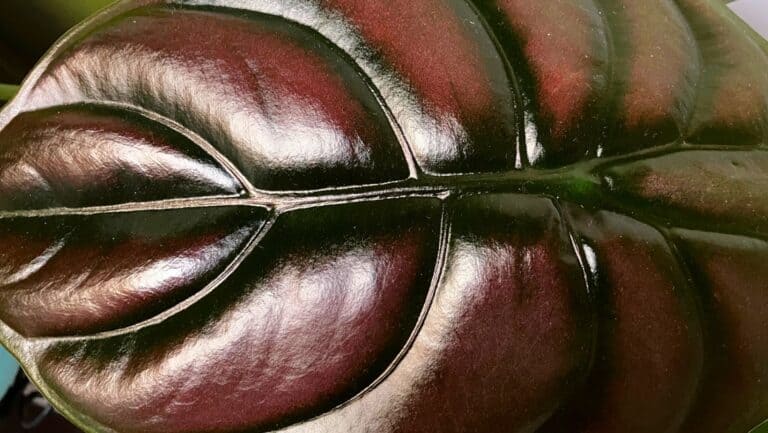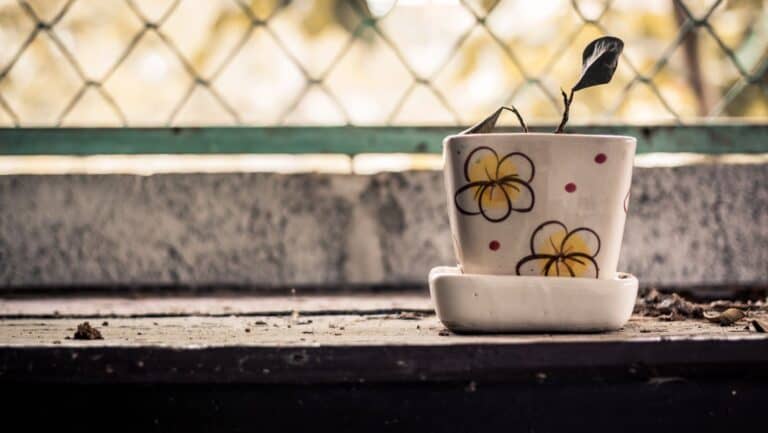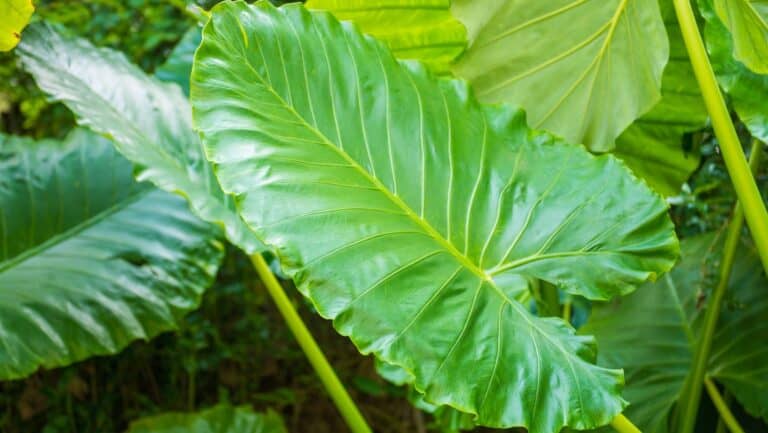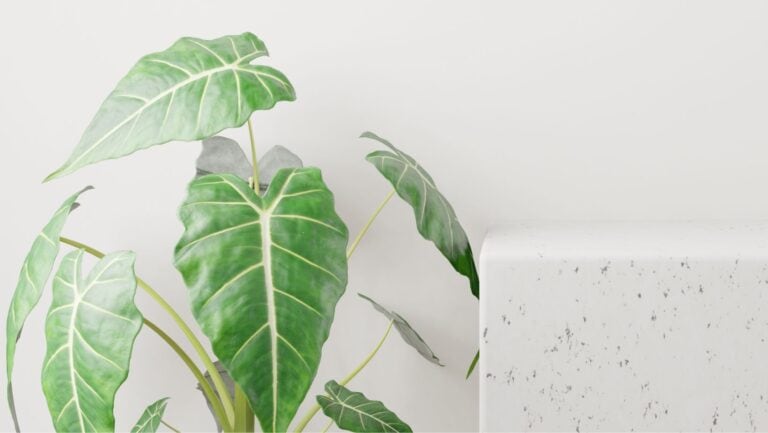Is Alocasia an Indoor or Outdoor Plant?
Alocasia is a popular house plant and we see them a lot in beautiful planters creating little corners of the jungle in our urban homes. However, like many other tropical plants, most of these beauties grow freely in the wild somewhere in the world. And they are savagely happy out there. So, should you give your Alocasia a little bit more freedom by placing it outside to enjoy fresh air and sunlight?
Smaller Alocasia species are mostly grown indoors, but bigger varieties require more light and space nd the logic suggests that they can be better off outdoors. In warmer zones Elephant Ears can be kept outside all year round. As we the temperatures go down Alocasia plants react by going dormant, sometimes with loosing some or all of the leaves. If you leave in a colder climate and don’t want to start anew every spring, think of keeping your plant in a container and bring it inside for the colder season.
The question of putting or not an Alocasia plant outside primarily concerns bigger Alocasia species, that we commonly call ‘Elephant Ears’. And we all know why: these plants can grow massive and just need more space. Also, you might dream of a piece of tropical paradise in your garden, rather than a scene from Jumanji in your house.
That said, if you think of keeping some smaller varieties outdoors, that can be trickier. These beauties are often more delicate and prefer shade and wet, but well-draining substrates. Their rhizomes are thinner and will struggle in colder temperatures.
You may take them outside in summer in their pot and with the usual care routine, but make sure to protect them from direct sun. More on the sun/shade requirements of Alocasia in this article.
Now, back to Elephant Ears. Can they grow outside? And will they grow indoors?
Can Elephant Ears Grow Outdoors?
In theory, bigger Alocasia can be used as either landscaping or container plants.
Back in their home countries, some species are so widespread, that can become an invasive nuisance for plantations. Isn’t it curious, how we are doing our best to keep these beauties alive while other people are looking for the best herbicides to get rid of them?
Some bigger Alocasia species are already established as elements of flora in countries and regions where climate permits it. Alocasia macrorrhizos, for example, feels at home in central and southern Florida and southern Texas. Researchers note their ‘inherent plasticity for adaptation to different climatic conditions and habitat types’.
One factor that prevents a larger invasion of Alocasia is the absence of natural pollinators. Without those, the plants form asexual colonies, which actually means that the same rhizome is slowly growing in the ground and new shoots grow from it.
Are Alocasia Hybrids Better Suited for Growing Outdoors ?
Some hybrids are created exactly for that purpose. LariAnn Garner and her team at Aroidia Research have developed several hybrids, including the very popular Alocasia x Portora, which is also sold under its commercial name “Thunder Waves” and several distorted names – “portadora”, “portodora”, “portidora”, or “Portore”.
The overall purpose of their breeding program is to make selections of Alocasia plants with unique foliage that are cold resistant and durable with a good growth rate in Florida.
Hybrids may be more cold hardy than their wild ancestors, but they are still tropical plants and preserve most family traits and habits.

Source: Aroidia Research
These plants originally come from places where you would wear a short and a pair of flip-flops all year round. When cold days arrive, you put on more clothes and hide from the cold in the cosy warmth of your home.
Alocasia plants react to less favorable conditions by going dormant, which can vary from just slowing growth to giving up on some or all of the leaves to preserve enough energy and nutrients for better times. (More on Alocasia survival without leaves in this article.) So, if you don’t want your Alocasia to reduce herself to a surviving rhizome, you might consider planting her in a container and getting her inside for colder months.
Will Elephant Ears Come Back After a Freeze?
One thing to keep in mind in terms of survival in colder climates is the rhizome. Think of it as of turmeric, ginger or simple potatoes. Do you think that you can leave a potato in the soil for the winter and expect new shoots in spring? If so, then an Alocasia might be able to return to life as days get longer and warmer.
The bigger and thicker the rhizome, the more nutrients it can stock for new shoots. Younger plants with a smaller and thinner rhizome freeze through and die more easily in colder temperatures.
If you live in a zone where the rhizome would freeze through in winter just dig it out and put it in some dark place to rest before the next season. Check it from time to time and don’t let it dry out completely. You can put it in soil and water slightly to wake it up gently before the spring comes.
If you don’t have an outdoors or live in a colder area and don’t want to start anew every year, you might think about growing elephant ears indoors.
Will Elephant Ears Grow Indoors?
They most certainly will. Once again, most Alocasia are very adaptable. Will they grow fast? It depends on the conditions you provide to them. With good lighting, enough water and some fertilisers they can grow pretty massive in no time. If your plant is unhappy, she will let you know by giving up on some older leaves.
Just note that in the wild, bigger Alocasia species often grow in open spots and are exposed to much more direct sunlight than their smaller relatives living in the forest floor. And though very adaptable, bigger elephant ears tend to require more light. And space.
If you lack those, know that you can have big dramatic leaves with smaller varieties too. Check out the article on Alocasia sizes to find the right one for your home.

